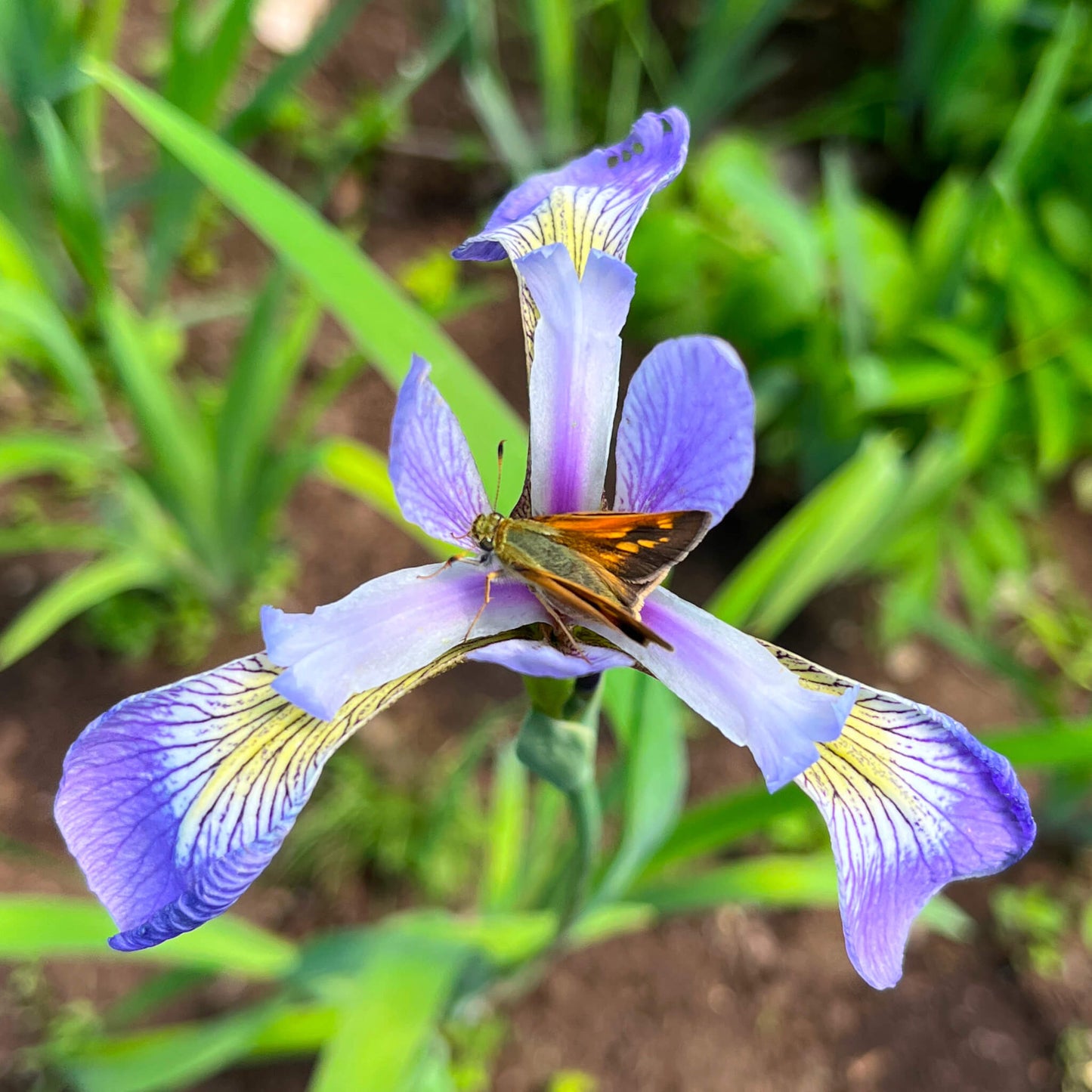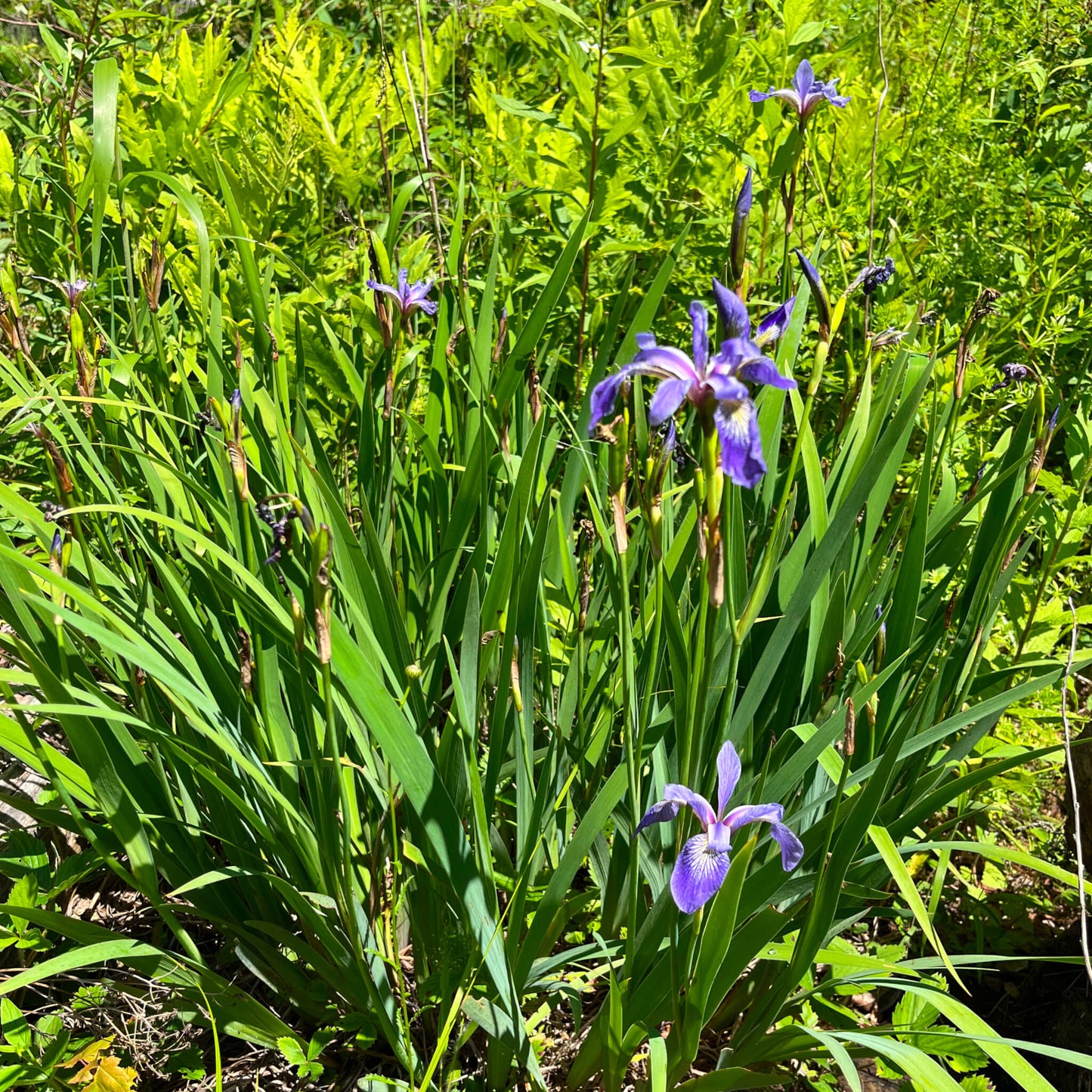This site is protected by hCaptcha and the hCaptcha Privacy Policy and Terms of Service apply.
For successful seedlings,
see the growing notes at the bottom of the page!
Harlequin blue flag (Iris versicolor), Quebec's official floral emblem since 1999, is a native perennial found from Manitoba to Newfoundland in Canada, as well as in several eastern U.S. states. Native to marshes and wet plains, it also adapts well to garden beds with good drainage, needing watering only during dry spells. This graceful plant reaches up to 65 cm in height and forms dense clumps of sword-shaped, blue-green leaves that are shorter than the flower stem. Its stunning blue-violet flowers, accented with touches of yellow and white, appear early in spring, adding a vibrant touch to gardens.
Ecological Roles
Harlequin blue flag plays a vital ecological role, especially in wetland areas, where its rhizomes help stabilize banks and prevent soil erosion. Its flowers attract a variety of pollinators, including bees and some butterflies, which benefit from its nectar and pollen. Its ability to thrive in wet environments makes it an ideal plant for water gardens and riparian landscapes, supporting local biodiversity while adding a natural decorative touch.
Harlequin blue flag seeds require cold stratification to ensure germination. See the cultivation notes below for more details.
Akène cannot assume any responsibility for the use of plants for therapeutic purposes. Always seek advice from a professional before using a medicinal or edible plant.
Sowing and Growing
Technical Details
Seeds per packet: 50
Family: Iris versicolor
Scientific name: Iris versicolor
Life cycle: Perennial
Hardiness zone: 2
Soil type: Loamy to clayey
Soil moisture level: Humid to wet
Soil - additional attributes:
Light: Sun, part shade
Blooming: May to August
Spacing: 50 cm
Height: 65 cm
Deer resistance: High
Stratification: 90 days
Scarification: Sanding, soaking
Germination time: 20 to 90 days
Sowing depth: 10 mm





